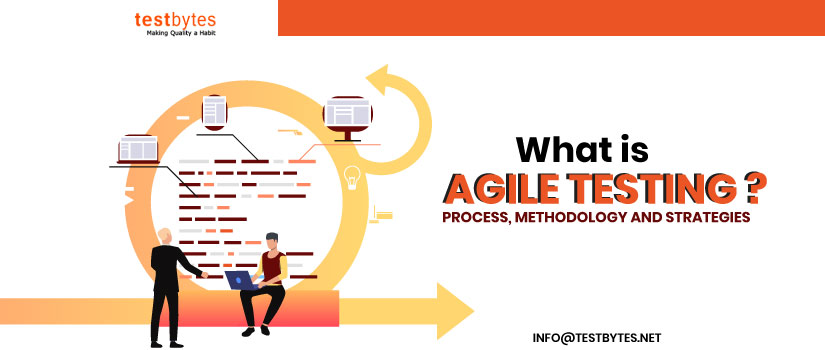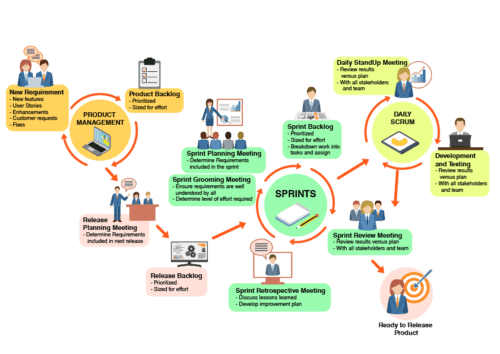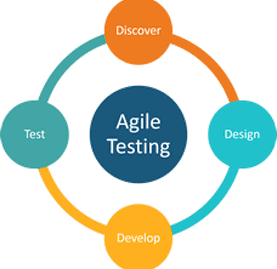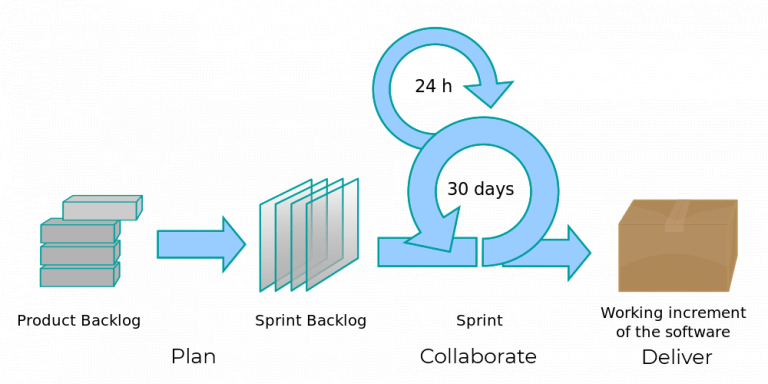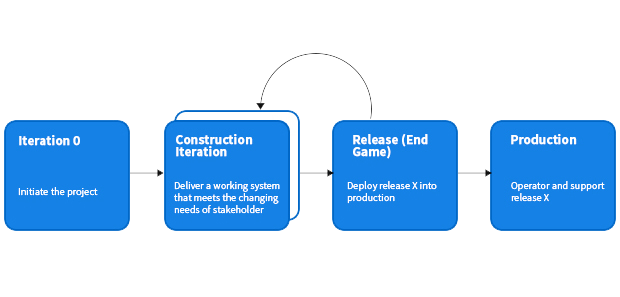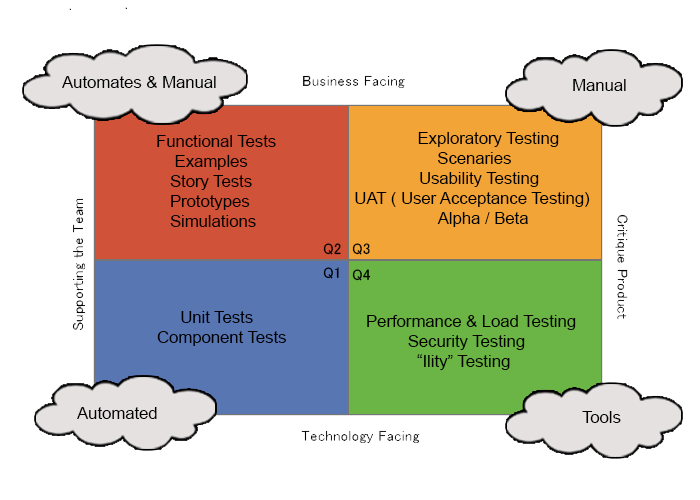Software professionals are under pressure to discover and measure quality aspects including usability, testability, maintainability, and dependability as well as engineering methods that assist the creation of high-quality products with these advantageous characteristics. Like other engineering objects, the software development process has to be designed. In other words, it has to be developed, put into practise, assessed, and maintained. The finest technical and management techniques must be incorporated in a methodical manner throughout the software development process, just as in other engineering disciplines.
Agile development approaches are becoming more popular among companies that are under pressure to provide apps of a better calibre in order to remain competitive. Agile and other iterative techniques are actually taking over as the industry norm for creating applications. Agile’s ideal goal is to accelerate the delivery of the greatest amount of business value possible by putting an emphasis on people and ongoing development. Although the agile technique is typically thought of as primarily relevant to development teams, the entire organisation must adapt.
Agile development confronts businesses with two significant challenges: being flexible enough to keep up with the iterative nature of the agile approach, and providing quality and stability to applications much earlier in the development process in order to align with the business.
The fundamentals of agile testing
The fundamental tenets of agile testing are as follows:
1. Working software is the main gauge of success in this Agile testing strategy.
2. Self-organizing teams have the highest chance of success.
3. Our first aim is to consistently and promptly deliver high-quality software.
4. Daily activity gathering is required of software engineers throughout the project.
5. Increasing agility through steady technology advancement and superior design.
6. Agile testing, which offers continuous input, makes ensuring that the final product lives up to the business’s expectations.
7. The Agile Test approach requires us to carry out the testing process as we implement it, which cuts down on the amount of time needed for development.
8. The Agile testing methodology should focus on maintaining a constant development speed.
9. Regularly reflect on ways to improve your effectiveness.
10. Self-organizing teams provide the finest architectures, requirements, and designs.
11. The team evaluates and modifies its behaviour to improve efficiency at each meeting.
12. The most effective and efficient way to share knowledge within the development team is through face-to-face conversations.
Read Also: Agile Software Development Methodologies
Process of Testing Software
Software testing is a technique for confirming and validating the software; it ensures that the software/applications are executed without errors or problems. An agile model created to satisfy all technical and commercial requirements. When applied, this model may be constructed with the same qualities and will function as intended. Software testing finds program/software bugs, mistakes, and faults. The software testing procedure must include fixing these faults, mistakes, and defects. When programme updates are made, the software should be tested once again and then once more after that, until all flaws have been discovered and corrected. The testing process and the condition of the software under test are monitored and reported on during test operations.
Important flaws are checked during test planning by going over the requirements and design papers. The testing team fixes these flaws but is unable to raise the software’s quality. Prior to testing, all enhancements should be implemented into the system, therefore they should all be recorded during the coding phase of software development. If software architects and designers acquire all the improvements within a certain time limit, they will have created a good model. The design of the software or application can be improved by testing before coding.
Read Also: What is Agile Testing? Process, Methodology and Strategies
Pros and Cons of the Agile Model
Agile methodologies are now extensively used in the software industry, however they might not necessarily be appropriate for all products. The agile paradigm has the following benefits and drawbacks.
The following shows the benefits and drawbacks of the agile model:
Pros
- Is an extremely practical method for developing software.
- Encourages collaboration and cross-training.
- Functionality can be quickly built and proven.
- Minimum resource requirements.
- Adaptable to both changing and fixed needs
- Provides early, imperfect answers.
- Effective model for continuously changing surroundings.
- Few rules, simple to use documentation.
- Allows development and delivery to occur concurrently within a larger, planned environment.
- Requires little to no planning
- Simple to handle
- Provides developers with flexibility
Cons
- Ineffective for managing complicated dependencies.
- A greater risk of extensibility, maintenance, and sustainability
- Without an overarching strategy, an agile leader, and an agile PM practise, it will not succeed.
- The scope, functionality to be supplied, and modifications to fulfil deadlines are determined by strict delivery management.
- Relies significantly on client contact; as a result, if the consumer is unclear, the team may be led astray.
- Since little documentation is produced, there is a great deal of individual dependence.
- The absence of documentation may make it difficult for new team members to learn technology.
Commercial Agile Testing Methodology
Agile testing is currently widely utilised in industries since it entails close customer participation and short week cycles. Due to all these qualities, the project moves very quickly. The shortcomings of the V-Model and the Waterfall Model are eliminated, making it the optimum technique.
For projects with shifting needs and unclear project scope, it is the optimum model. Customers are more confident and satisfied with the finished product as a result of the regular customer participation at every stage, which also reduces the likelihood of future defects. Since there is client engagement throughout every cycle, the final product that is given at the conclusion of each cycle meets the criteria.
Agile testing also lowers project costs since workable products are supplied in increments after each cycle, reducing the likelihood of future defects. Additionally, this process improves communication and team trust in QA.
Due to its benefits, lower delivery costs, and other qualities in the modern industry, Agile is now a new and one of the methodologies that takes the longest to adopt.
Read Also: Agile VS DevOps: Difference between Agile and DevOps
Distinguish between Agile Testing and Waterfall Testing
The Development Life Cycle activities take place in phases that are sequential in a Waterfall Development approach. As a result, testing is a distinct phase that begins only after the development phase is over.
The key distinctions between Agile Testing and Waterfall Testing are as follows:
| Sr. No. | Agile Testing | Waterfall Testing |
| 1. | Testing takes place concurrently with development and is not a distinct step. | Testing is a different stage. Only when development is complete can testing at all levels and levels begin. |
| 2. | Developers and testers collaborate. | Testing is a different stage. Only when development is complete can testing at all levels and levels begin. |
| 3. | The creation of requirements involves testers. This aids in establishing the acceptance criteria and linking requirements to behaviours in the real-world scenario. Along with the criteria, logical Acceptance Test Cases would also be prepared. | It’s possible that testers are not involved in the requirements phase. |
| 4. | Acceptance after each iteration, testing is carried out, and client feedback is gathered. | Acceptance Only the last stages of the project is tested. |
| 5. | Regression testing may be used whenever new functions or logic are published because each loop finishes its own testing. | Regression Testing can only be put into practise once development is finished. |
| 6. | There are no wait times between coding and testing. | Regular gaps of time between coding and testing |
| 7. | Testing that is on-going and involves many test levels. | Test levels cannot overlap since testing is a timed activity. |
Conclusions
The agile method has been in use for a while. It has proven essential in many of the intricate projects that both small and large businesses are now working on. The most creative businesses of today and future will keep pushing the boundaries of agile methods. For them, the ability to develop, plan, and carry out initiatives successfully in a fast-paced, dynamic environment will be the difference between just existing and thriving. Making the proper judgments throughout project execution as well as planning is a key component of agility.
Testing methods, skills, techniques, and equipment may need to shift in order to handle that sort of change. The mechanics of test execution are one area of software testing that does not change merely because the project team is utilising an agile strategy to build software, although certain testers may need to significantly alter their testing methodology if they are to be useful on an agile software project. Agile testers must decide what work to complete next, how to complete it, how to make it relevant to the client, and how to exercise the application in various ways to enhance their understanding of how things operate and potential risk areas.



